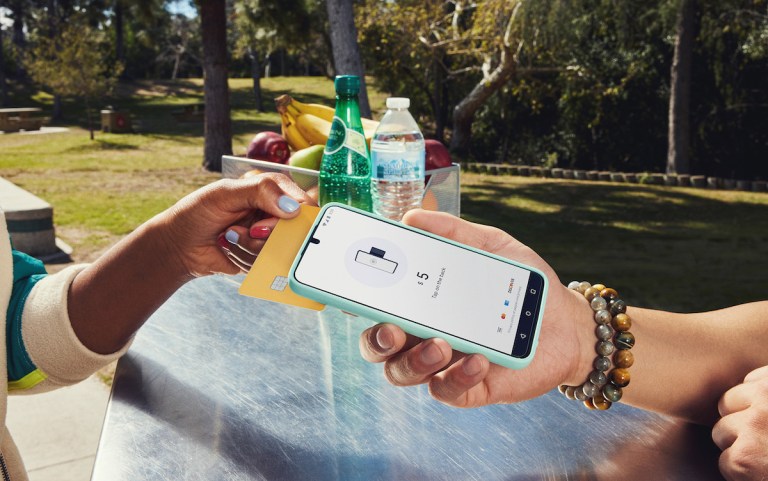Many consumers would be lost without their phones, as the world increasingly fits in the palm of a hand — at least the crucial everyday bits.
Businesses of all shapes and sizes must take the necessary steps to meet their emerging audiences on their phones. And not just with marketing collateral and other engagements, but with true change-the-game digital payments capabilities.
“Tap to pay is going to change the payments industry,” PayPal Head of Product for Microbusiness Ed Hallett told PYMNTS. “It’s the next disruptive innovation. Looking back 15 years ago, there was an equivalent innovation cycle within card payments around mobile [point of sale (POS)]… You had a real push to unlock large portions of the [small- to medium-sized business (SMB)] space who previously didn’t take card payments. They were now able to provide that capability.”
The payment service providers, the card schemes, and the ubiquitous presence of smart devices came together to unlock that innovation cycle, he added.
Digital Payments Are Increasingly Prevalent
But that innovation cycle, fueled by cheap and accessible POS hardware and having ushered in the next phase of digital transaction capabilities, is on its last leg.
SMBs using mobile POS systems still need to connect, replace and manage the realities of their hardware as well as the paired software solutions.
Advertisement: Scroll to Continue
This creates ongoing hassles and bottlenecks for businesses trying to get paid for their goods and services.
With tap to pay, there’s no need to “manage a separate peripheral device, and businesses have a single app to close out all of their digital payment interactions,” Hallett explained.
Businesses can accept contactless, near-field communication (NFC)-enabled tap-to-pay transactions using the phones and connected devices they already own, generally just by downloading one app.
“It’s truly a purely digital experience,” Hallett said. “There is no need to purchase additional hardware, and you don’t need to download any software either. You just verify your identity, and you’re in the business of taking card payments. Compared to the hardware journey, the lack of friction is laughable.”
Making Tap to Pay More Accessible
Product market fit can exist in a vacuum, but to be successfully commercialized, innovations must be seamlessly scalable across demographic-agnostic end-user audiences.
Tap-to-pay solutions already exist in the market today, and contactless payments represent a well-documented new feature in the payment ecosystem. However, they have yet to really “take off” to the degree that their easy-win benefits might suggest, Hallett said.
“It’s a new interaction that will take place between the consumer and the small business when they place their card on the phone, which is a new kind of behavior,” he said.
“SMBs might need to be able to talk the consumer through that interaction and explain to them that this is going to be a secure contactless payment transaction that has exactly the same security layers as tapping on a card reader,” he added.
Still, “we are interested in the path to unlock the benefit of this technology at a massive scale for entry-level small businesses,” he explained.
That’s why PayPal is launching a new Tap to Pay solution on Android for Venmo business profile customers in the United States, as well as all U.S. PayPal Zettle customers, starting Wednesday (June 28).
“By enabling [tap to pay (TTP)] through Venmo business profiles, we are effectively placing the ability to accept card payments — alongside Venmo payments — just a few digital steps away from the 90 million users of the app with no need to download any additional software, let alone order and manage hardware,” Hallett said.
The question now is how tap to pay will gain mass market adoption and unlock an evolution of the contactless payment ecosystem. Hallett said he believes Venmo’s existing 90 million business users paired with the TTP solution’s minimal friction is the gateway to the future.
“Quick service, food and drink, and health and beauty are really compelling subsegments where we see this being used,” he added.




